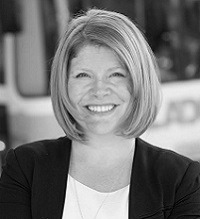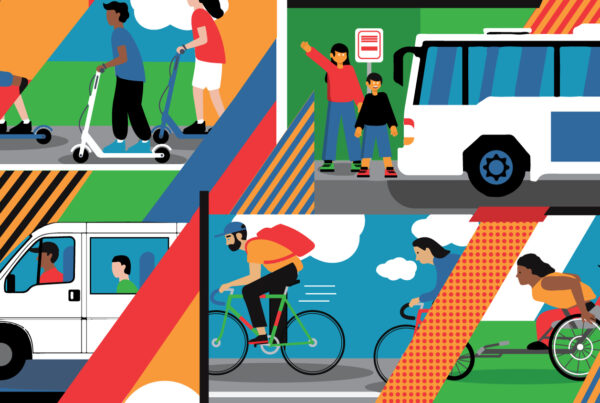This past August, Seleta Reynolds took the reins as the new general manager of the Los Angeles Transportation Department (LADOT). Reynolds previously served as a manager of San Francisco’s Municipal Transportation Agency, where she championed issues such as pedestrian safety and multi-modal transportation. Her hire marks what many see as a new chapter for LADOT, with a focus on creating streets that serve all users, including drivers, transit riders, pedestrians and cyclists.
The following is an edited version of the Shared-Use Mobility Center’s conversation with Seleta Reynolds. In each issue of SUMC’s newsletter, we will profile a different shared mobility innovator.
What are LA’s plans related to shared mobility in the coming year?
Launching bikesharing in downtown LA and Hollywood – with somewhere around 1,000 bikes located around the city – will be a pretty huge change in how people get around. We are also planning to expand our 40-space, on-street parking pilot for carsharing cars and are looking at allowing point-to-point carsharing in LA.
What do you see ahead for shared mobility?
I’d like to see a shared variety of every mode of transportation, all integrated through mobile technology. People could pick a scooter, a bike, a car…whatever they want depending on their needs and what traffic looks like. Our mission is to get the most choices out there possible.
We also don’t want to be constrained by thinking about shared mobility just in terms of first/last mile issues. One-third of all trips are less than five miles, which makes them a better match for shared mobility than transit. There’s a huge opportunity there for modes like bikesharing and carsharing that we haven’t even begun to tap yet.
What was it like to come to LA from San Francisco?
LA is much more dense, urban and multi-modal than people give it credit for. One-third of people who live downtown don’t own a car. We have one of the busiest rail lines in North America and lots of projects under way. My job takes me through all different parts of the city and I see a huge variety of people biking, walking and taking transit. I think there are bigger opportunities in LA for carsharing, ridesharing, and peer-to-peer networks than people realize.
What are some of the transportation challenges in LA?
Having 88 cities in Los Angeles County presents some jurisdictional challenges. For instance, the city has a BRT (Bus Rapid Transit) line on Wilshire that stops in Beverly Hills, and then picks back up again downtown. Taxi drivers have to deal with different sets of regulations in different cities in LA County. They may be able to drop off a passenger in a certain community, but they can’t pick up there without the correct licensing or franchise fee. There needs to be more collaboration.
What mobility trends are you watching?
People talk a lot about Millennials, but at the other end of the spectrum you have the boomers who are getting ready to retire. That becomes a challenge from a transportation perspective. Another group to consider is returning veterans, who may have short or long-term disabilities that don’t allow them to drive. There’s a huge opportunity there for connection with shared mobility.
I also think we’re going to see the disrupters get disrupted. That includes companies like Uber and Lyft, but public transit may also be facing some kind of disruption. If I can order up a $5 super shuttle, 24/7 to any destination from my smartphone, why would I walk down the street and wait for a bus? We need to think about what that does for traditional transit ridership.
What are your hobbies outside of work?
I love to cook and entertain. I’m also a longtime reader – I usually have a couple of books going. That’s one reason I love riding the bus; it’s my time to read.



